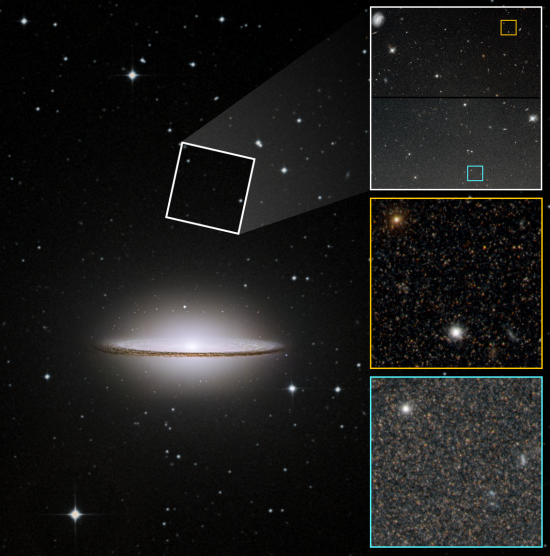
February 21, 2020
The Sombrero galaxy is larger than expected.
A significant contribution to plasma cosmology came from Dr. Anthony L. Peratt, a plasma physicist and protégé of the Nobel laureate Hannes Alfvén. Dr. Peratt studied plasma formations in the laboratory for many years, monitoring short-duration z-pinch effects, as well as creating particle-in-cell animations using the most powerful supercomputers. He concluded that galaxies, rather than being condensations created by gravity, are actually plasma formations.
Simulations of galaxy-scale field-aligned electric filaments revealed that “…compression of tenuous cosmic plasma due to the self-consistent magnetic fields from currents conducted through the filaments” resulted in the formation of several galaxy configurations. Among them were elliptical and barred spirals.
The Sombrero galaxy, also known as NGC 4594 or M104, is a spiral galaxy in the constellation Virgo. Conventional redshift measurements, employed by consensus astronomers, place it over 28 million light-years from Earth. That figure could be highly misleading, as several Picture of the Day articles point out.
Discovered in 1781 by Pierre Mèchain, the Sombrero galaxy is puzzling even to this day. It is a spectacular lenticular galaxy when seen through most optical telescopes, with a thick band of dark dust. As long ago as 1993 long-exposure optical images by Australian Astronomical Observatory’s David Malin revealed a halo of dust and gas completely englobing the galaxy, which led Malin to speculate that the Sombrero was a gigantic elliptical structure.
According to a recent press release, Malin was right. Images from the Hubble Space Telescope indicate that there is a much larger halation surrounding the galaxy. The finding answers a long-standing question about the Sombrero. Spiral galaxies are not supposed to have so many globular clusters around them. Since there are as many as 2000 around M104, the fact of its newly discovered elliptical status helps to resolve the issue.
Another mystery under investigation is the composition of stars within the galaxy. Paul Goudfrooij of the Space Telescope Science Institute wrote:
“The Sombrero has always been a bit of a weird galaxy, which is what makes it so interesting. Hubble’s metallicity measurements (i.e., the abundance of heavy elements in the stars) are another indication that the Sombrero has a lot to teach us about galaxy assembly and evolution.”
Roger Cohen of STScI said:
“Hubble’s observations of the Sombrero’s halo are turning our generally accepted understanding of galaxy makeup and metallicity on its head.”
Since galaxies are electrical phenomena, and exist within a circuit that traces through the cosmos from beginning to end, it is not surprising that conventional astrophysics, based entirely on gravity as its motive force, does not comprehend what it sees. No one can tell where the electricity rises or to what sink it is attracted, but electromagnetic fields surrounding galaxies and synchrotron radiation radiating from them reveal that those circuits exist.
Electric charge flow organizes into fields of plasma composed of neutral atoms, but with a small fraction of electrons, protons and other charged particles present. Those particles, and the charge-neutral ones they sweep along with them, are driven by electromagnetic fields, forming “pinches” of matter. It is plasma, along with the electricity that it generates, that drives structure within the cosmos. Galactic formation and behavior are indicative of Birkeland current filaments creating z-pinch zones in which those galaxies can form. Since galaxies are often strung like pearls through space, that arrangement lends credence to the idea.
The Sombrero galaxy most likely demonstrates how other spiral galaxies are constructed. Indeed, it has recently been shown that the Milky Way is surrounded by a vast halo, as well. Perhaps all galaxies are elliptical in nature, with the limitations imposed by instrumentality preventing that realization.
Stephen Smith
The Thunderbolts Picture of the Day is generously supported by the Mainwaring Archive Foundation.












